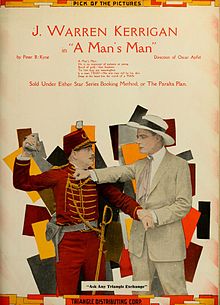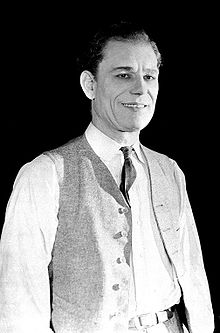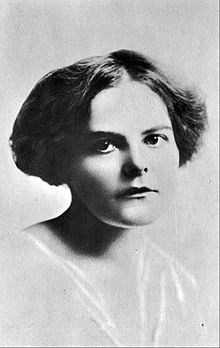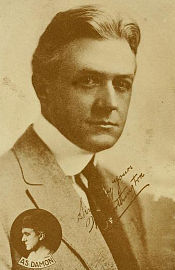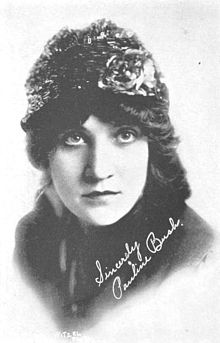The Restless Spirit
The Restless Spirit is a 1913 American silent short drama film written and directed by Allan Dwan, featuring J. Warren Kerrigan and Pauline Bush. The film is based on Thomas Grays 1751 poem, Elegy Written in a Country Churchyard, and tells the story of a man who wishes to be a conqueror. The Dreamer heads out into the desert and is nursed back to health by the Desert Flower. A series of illusions follows which shows the futility of conquest when he cannot conquer his own community. He returns and eventually becomes respected by the community that once ridiculed him. The film makes use of numerous dissolves which were technically difficult to execute, and reportedly sent the cameraman to the hospital due to stress. The film may have been the last unbilled appearance by Lon Chaney, and was released on October 27, 1913 by Universal Film Manufacturing Company under the Victor label. The film is presumed lost.
The groundwork for The Restless Spirit began when Allan Dwan visited Universals offices in New York in late July 1913. Frederic Lombardi believes that it was during this meeting that Carl Laemmle offered Dwans colleagues double their pay from Flying A if they would come to Universal. In the following weeks, J. Warren Kerrigan came to Universal and the two would work together in the production of The Restless Spirit. Dwan credits the idea to adapt and produce a film on Thomas Gray s Elegy Written in a Country Churchyard as a betting challenge. Dwan also claimed to have studied Grays poem and dream about the production before accepting the challenge. Frederic Lombardi, author of Allan Dwan and the Rise and Decline of the Hollywood Studios, writes that Dwan may have been emboldened after the production of the Pickett Guard and the lack of structure in Grays poem. Since the poem had no real story, Dwan could formulate his own allegorical plot. Dwan was also able to convince his employers that the work would be a box office success and intended to use the film a prestigious multirole vehicle for Kerrigans debut at Universal. Lombardi writes that Dwan was subject to produce overtly artistic films, but these tendencies were kept in check by Dwans more practical inclinations.The films ethereal aspects and double exposures were performed in the camera because the ability to create the effects in lab did not yet exist. Dwan madedissolves in the film, each required precise control by the cameramen and that the counts had to be exact otherwise the shot would be ruined. Lombardi notes that the cinematographer, Walter Pritchard, was the man who had to go through the ordeal and that Universal said he was one of the companys oldest men. Dwan would claim that Pritchard would end up in the hospital from the production. In The Parades Gone By, Brownlow instead gives the number of dissolves asand adds to the story by Dwan claiming that the audience could not figure
Source: Wikipedia


